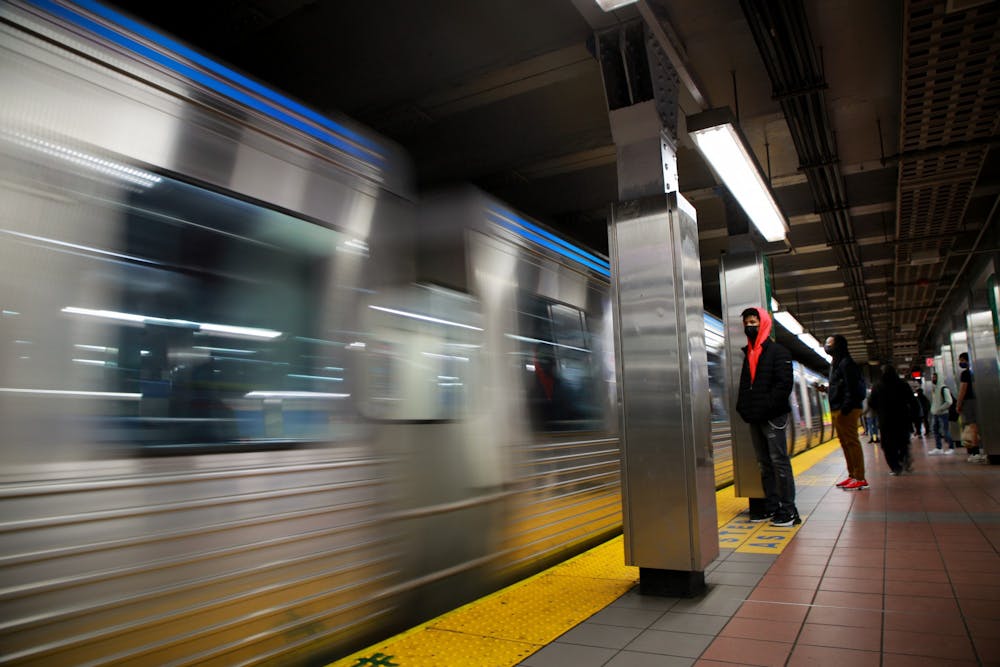Beginning next year, SEPTA will implement artificial intelligence-based gun detection software into its surveillance cameras as part of an effort to address gun-related crimes committed on the transportation system.
The technology, which comes from a company called ZeroEyes, uses artificial intelligence to detect if an individual has a gun. It will then send out an immediate alert to the ZeroEyes dispatch center, located in Conshohocken, Pa., and SEPTA police will be notified of the incident within three to five seconds. After the alert is sent out, a police officer will arrive on the scene anywhere from several seconds, if they are in the specific station already, to several minutes, if the closest officer is positioned in a nearby station.
SEPTA approved a six-month pilot program of the technology and a $63,000 budget for its implementation at its November monthly meeting. Three hundred of the 30,000 live cameras currently installed in SEPTA stations are going to be provided with the ZeroEyes technology.
Initially, implementation will be mostly focused on stations on the Market-Frankford Line and the Broad Street Line, but it will eventually grow to include a diverse array of subway, trolley, and bus stations.
SEPTA is the first transit agency to implement the ZeroEyes program, although it is being used by the U.S. Department of Defense and other entities.
The implementation of the ZeroEyes technology comes at a time after a string of recent incidents of violence on the SEPTA system.
“We’re dealing with, unfortunately, around the country, issues related to gun violence, and while those incidents are very rare on SEPTA, even one is too many,” Andrew Busch, director of media relations for SEPTA, told The Daily Pennsylvanian.
He added that SEPTA is aware that its riders have concerns about safety and security, and they hope to reassure riders that making them feel safe is a top priority.
RELATED:
Philadelphia City Council approves permanent 10 p.m. curfew for teens
Students express safety concerns in local Wawa stores following recent store closures
In New York, the MTA is testing out platform barriers after a woman was pushed to her death in front of a train at a Times Square subway station. Busch said SEPTA is paying attention to what other transit agencies across the country are doing to improve safety.
SEPTA intends to do further studies to see if such technology will be effective. However, Busch said that due to the costliness of the technology’s implementation, he does not anticipate this to happen any time soon.
In addition to the ZeroEyes technology, SEPTA is planning to place unarmed security guards in stations who can keep watch on everything that is going on and enforce rules, such as the ban on smoking and that people are paying the ride fare.
SEPTA will also be increasing the number of outreach workers it has employed. These are trained social workers whose goal is to help Philadelphia’s most vulnerable populations, including individuals experiencing homelessness, drug addiction, or mental health issues. SEPTA currently has 30 outreach workers, but it will increase its budget in order to provide 57.
“We’re trying to help people who are in crisis situations and treat them with compassion and dignity and help them get the services that they may need. But also we, as part of that, need to make clear that the station or a train or a bus aren’t suitable to be shelters or to be places where drugs can be used out in the open,” Busch said.
Busch also mentioned that SEPTA increased the salaries of its transit police officers earlier this year after noticing their wages were not competitive with the Philadelphia Police Department. SEPTA is currently in the process of hiring and training new officers.
Busch summarized that all of SEPTA’s efforts to improve commuter safety, including the ZeroEyes program, are not meant to cause any drastic change in how the system operates. They are intended to use what is already there and innovate to relieve existing safety issues.
He said that he does not anticipate that riders will notice differences, such as new cameras, and added that the intention behind this technology is to track incidents that are occurring and what SEPTA can do to intervene in them.
“We hope that it reassures [our riders], and we’re looking forward to seeing how it goes and seeing if [the ZeroEyes program] is something that’s viable for us to do long term,” Busch said.









